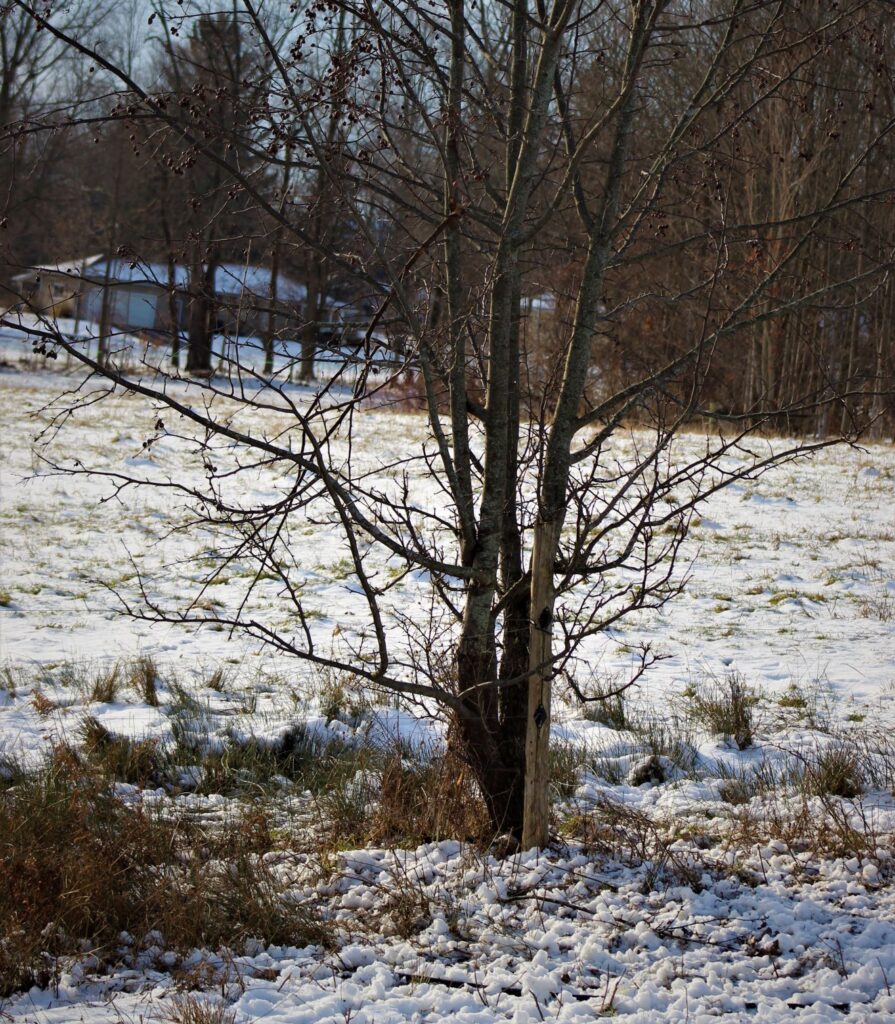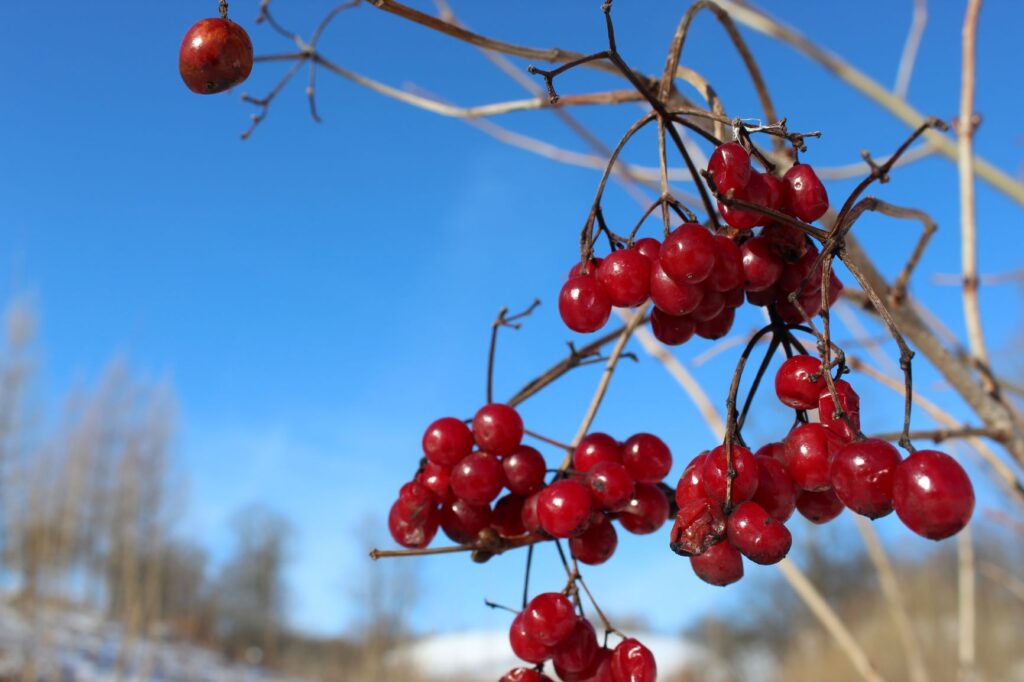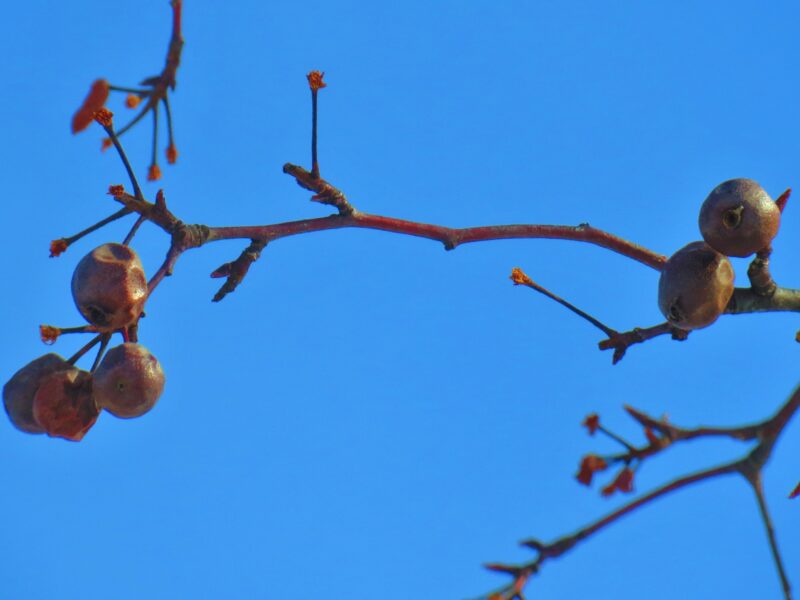By Troy Bishopp
Snow has fully blanketed our landscape and signs of wildlife looking for sustenance from the land are clearly visible. But there’s a spot so frequented, all the snow is gone. You may be wondering where this wildlife “water cooler” exists. The diner of choice, for the local herbivores, carnivores and omnivores is under a surprising, Dolgo Crabapple tree which was purchased from the Madison County Soil and Water Conservation District’s tree sale. The faith of a holistic planting plan has come home to roost.

Upon further investigation, the base is inundated with bird, deer, fox, squirrel and mice tracks all looking for the freeze-dried, reddish fruit that may fall from the branches in a stiff breeze. What possesses this strong desire? Turns out, much like a raisin, the shriveled, ugly little apple is packed with concentrated sugar (energy) and beneficial to animals for surviving the winter solstice.
According to UVM biology professor emeritus Bernd Heinrich, and NY Times best-selling author; there are 29 species of berries that ripen in fall and persist on the branch through the winter which he chronicles in his 2009 book, Winter World: The Ingenuity of Animal Survival. “Fruit pulp is typically rich in carbohydrates and vitamins and the seeds inside are concentrated sources of fat and proteins”, writes Heinrich.
Vermont Conservation Consultant, naturalist, and writer, Susan Shea says, “Trees and shrubs laden with refrigerated fruit are an important food source for wildlife and can produce some spectacular animal sightings. Planting these native fruit-bearing trees and shrubs are a great way to provide food for birds and other wildlife in winter. Some good choices are apple varieties, Mountain Ash, Serviceberry, Winterberry and the three viburnums: Nannyberry, American Cranberry and Arrowwood”.
The best part of this tree food narrative is it’s just one attribute of countless benefits to planting trees and shrubs on one’s landscape. Depending on your goals, there are native species that can fit most bills and leave an important legacy for your grandchildren to enjoy. Winter days are a good time to grab a pair of skis or snowshoes and look at your land objectively and plan a planting.

Luckily, we are all blessed to have local Conservation Districts throughout our communities that can help and are now taking tree sale orders for spring planting so it’s time to create memories and give them a call or find them on the web. I’ll admit my colorful tree catalogs have a hypothesizing effect to order more than my back can handle, but a farm boy can dream:
“Twas the night after plowing snow, when all through the house, Nothing was stirring, not even my spouse; The tree sale catalogs were next to my coffee as I stared, The glorious pictures gave hope of spring as I rocked in my chair; The seedlings are still nestled all snug in their winter beds, While visions of planting day danced in my head.”
Published in Country Folks


 Farmer Bill Gates in a Tractor near you?
Farmer Bill Gates in a Tractor near you? »
»